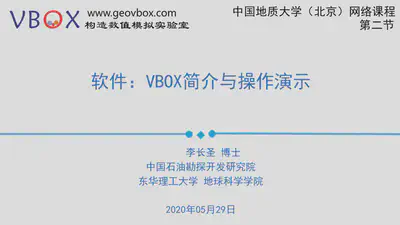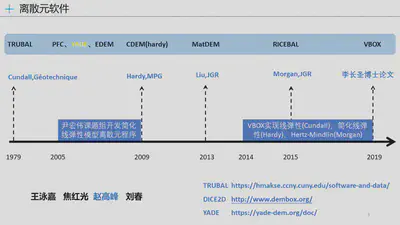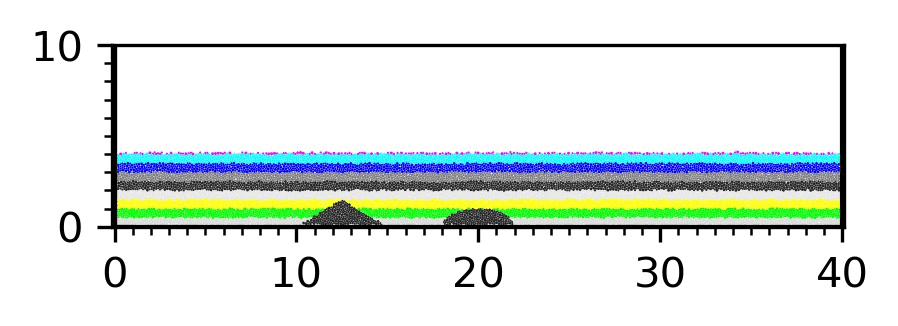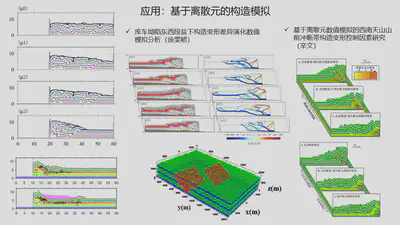Session 2 Software Introduction to VBOX and Operation Demonstration
Course Playback
- geovbox@Bilibili https://www.bilibili.com/video/BV1st4y1C7b5?p=2
Tencent Meeting (Ended)
- Course Time: 2020/5/29 (Friday) 19:00-20:30
- Click to Join: https://meeting.tencent.com/s/CFsbRmi3f9Pt
- Meeting ID: 519 383 830
Course Introduction
- Presentation Title: Session 2 Software: Introduction to VBOX and Operation Demonstration
- Presenter: Li Changsheng
- Content Summary:
- An Example to Learn VBOX
- Erosion
- Sedimentation
- Faults
- Detachment Layer
- Palaeohigh
- Extension Structure with Rigid Base
- Extension Structure with Ductile Base See Paper
- This course is recommended by experts Guanshuwei from the Research Institute of Petroleum Exploration and Development, China Petroleum, and Professor He Dengfa from the School of Energy at China University of Geosciences (Beijing), comprising three sessions:
- Session 1 Theory: Tectonic Simulation and Discrete Elements Playback Completed
- Session 2 Software: Introduction to VBOX and Operation Demonstration (Week 2)
- Session 3 Application: Tectonic Simulation Based on Discrete Elements (Week 3)


- TRUBAL https://hmakse.ccny.cuny.edu/software-and-data/
- DICE2D http://www.dembox.org/
- YADE https://yade-dem.org/doc/


Units (km)
Evolution Process of Tectonic Deformation and Stress-Strain




If you need to use VBOX, apply for an account following the Nanjing University High-Performance Computing Center Account Activation Method.
The Nanjing University High-Performance Computing Center cluster was the first in China’s high-performance computing system among universities in 2009. It ranked 284th in the global TOP500 list of supercomputers released in June 2017. At the Nanjing University High-Performance Computing Center (http://hpcc.nju.edu.cn), not only can VBOX be used for tectonic numerical simulation, but also high-performance scientific computing services can be provided for research work in various related disciplines.
Translator: Zhu Suqin